'Snow-cannon' Enceladus shines up Saturn's super-reflector moons
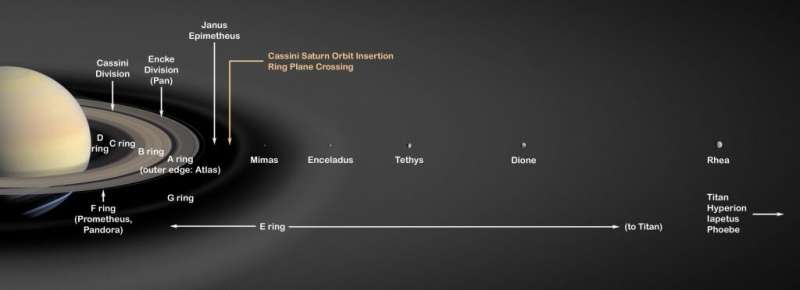
Radar observations of Saturn's moons, Mimas, Enceladus and Tethys, show that Enceladus is acting as a "snow-cannon," coating itself and its neighbors with fresh water-ice particles to make them dazzlingly reflective. The extreme radar brightness also points to the presence of "boomerang" structures beneath the surface that boost the moons' efficiency in returning the microwave signals to the spacecraft. The results will be presented at the EPSC-DPS Joint Meeting 2019 in Geneva by Dr. Alice Le Gall.
Dr. Le Gall and a team of researchers from France and the US have analyzed 60 radar observations of Saturn's inner moons, drawing from the full database of observations taken by the Cassini mission between 2004 and 2017. They found that previous reporting on these observations had underestimated the radar brightness by a factor of two.
Unprotected by any atmospheres, Saturn's inner moons are bombarded by grains of various origins which alter their surface composition and texture. Cassini radar observations can help assess these effects by giving insights into the purity of the satellites' water ice.
The extreme radar brightness is most likely related to the geysers that pump water from Enceladus's internal ocean into the region in which the three moons orbit. Ultra-clean water ice particles fall back onto Enceladus itself and precipitate as snow on the other moons' surfaces.
Dr. Le Gall, of LATMOS-UVSQ, Paris, explained: "The super-bright radar signals that we observe require a snow cover that is at least a few tens of centimeters thick. However, the composition alone cannot explain the extremely bright levels recorded. Radar waves can penetrate transparent ice down to few meters and therefore have more opportunities to bounce off buried structures. The sub-surfaces of Saturn's inner moons must contain highly efficient retro-reflectors that preferentially backscatter radar waves towards their source."
-
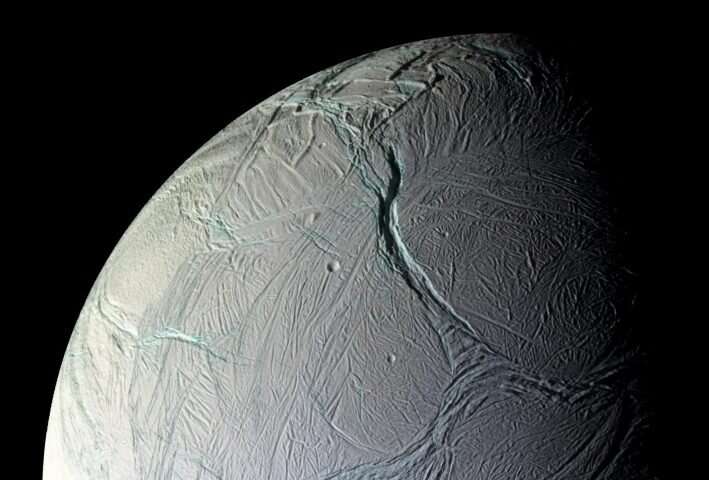
Mosaic of the surface of Enceladus captured by Cassini on 9th October 2008 from an altitude of 25 kilometres. Credit: NASA/JPL/Space Science Institute -
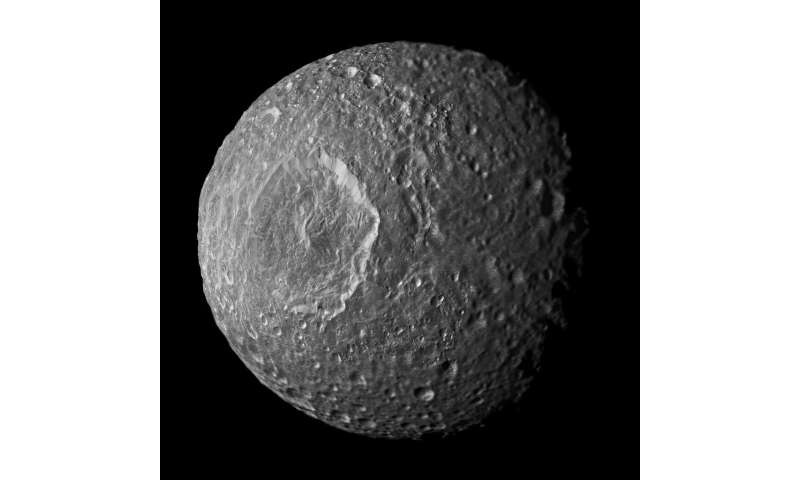
Saturn’s moon, Mimas showing dark regions below bright crater walls and streaks on some of the walls. Credit: NASA/JPL/Space Science Institute -
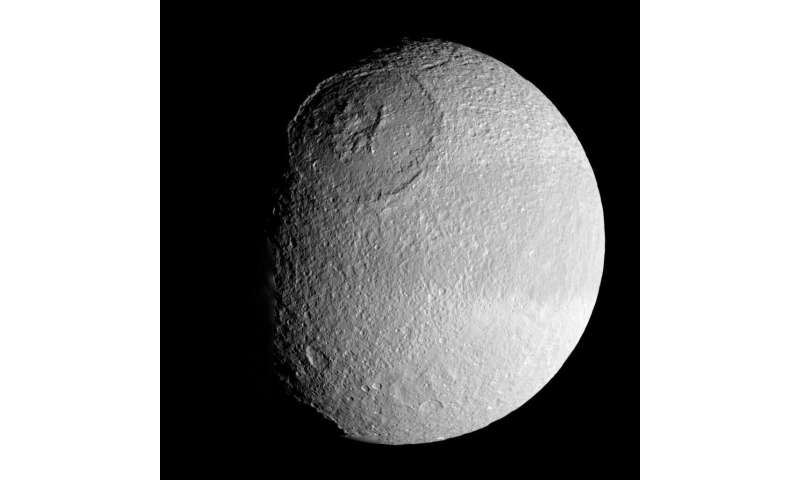
Mosaic view of Saturn’s moon Tethys showing Odysseus crater. Credit: NASA/JPL/Space Science Institute -
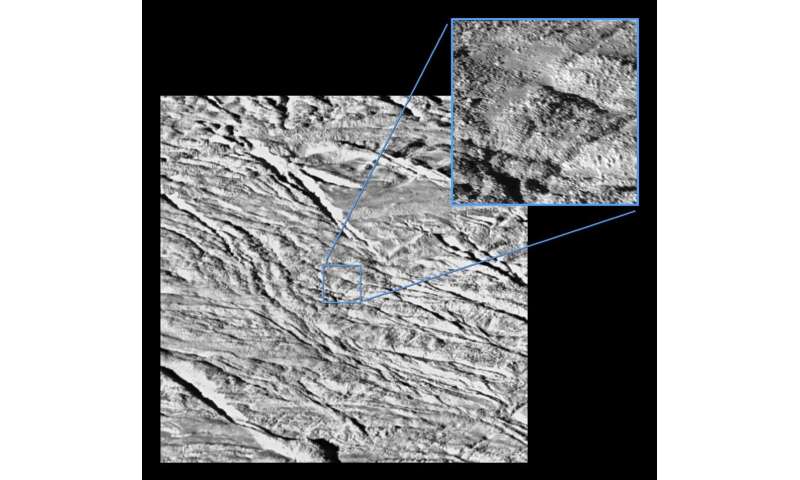
Boulder-strewn surface of Enceladus in context of a wide-angle camera image. Both images were acquired at an altitude of approximately 208 kilometers by the Cassini mission. Credit: NASA/JPL/Space Science Institute -
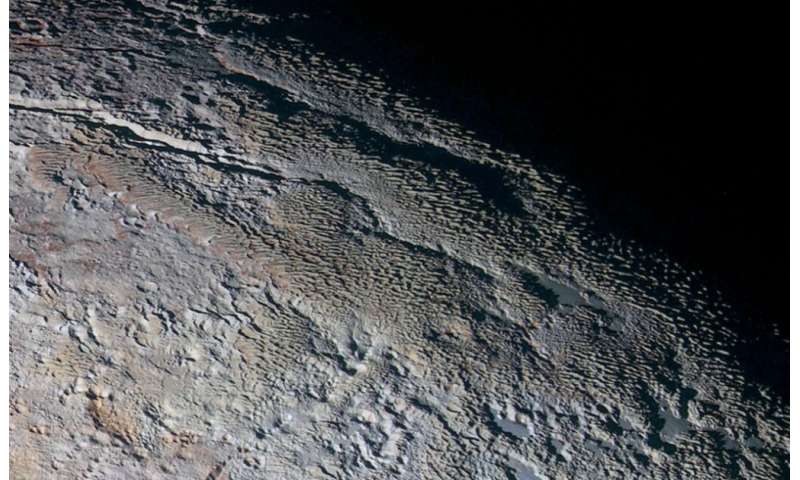
Blade-like features called penitentes, here observed on the surface of Pluto, would provide the required reflective efficiency for the radar brightness seen at Mimas, Tethys and Enceladus. However, it’s not clear that there is enough solar energy to sublimate the ice and form such structures. Credit: NASA/JHUAPL/SwRI
The nature of these scattering structures remains a mystery. Observations of Enceladus have shown a variety of surface and subsurface features, including ice-blocks, pinnacles, and dense collections of fractures in the surface caused by thermal stress or impacts. However, it has not been demonstrated that these would cause the extreme radar brightness observed at the moons.
More exotic structures, such as blade-like features called penitentes or bowl-shaped depressions in the snow known as sun cups, would provide the required reflective efficiency. However, it's not clear that there is enough solar energy to sublimate the ice and form such structures.
Dr. Le Gall and colleagues have now developed a series of models to test whether specific shapes are acting as effective retro-reflectors or whether random scattering events caused by fractures in the surface are combining to enhance the reflection of the signal back towards the spacecraft.
"So far, we don't have a definitive answer," said Dr. Le Gall. "However, understanding these radar measurements better will give us a clearer picture of the evolution of these moons and their interaction with Saturn's unique ring environment. This work could also be useful for future missions to land on the moons."
More information: Saturn's inner moons: why are they so radar-bright? meetingorganizer.copernicus.or … SC-DPS2019-454-2.pdf
Provided by EuroPlanet Society





















